
The R/V Sally Ride, an intrepid explorer of the sea, embarked on her first voyage, affirming the legacy of her namesake and forging a new path in oceanographic research. Named after the trailblazing astronaut Sally Ride, the vessel captures her spirit of discovery and continues her mission to push the boundaries of human knowledge.
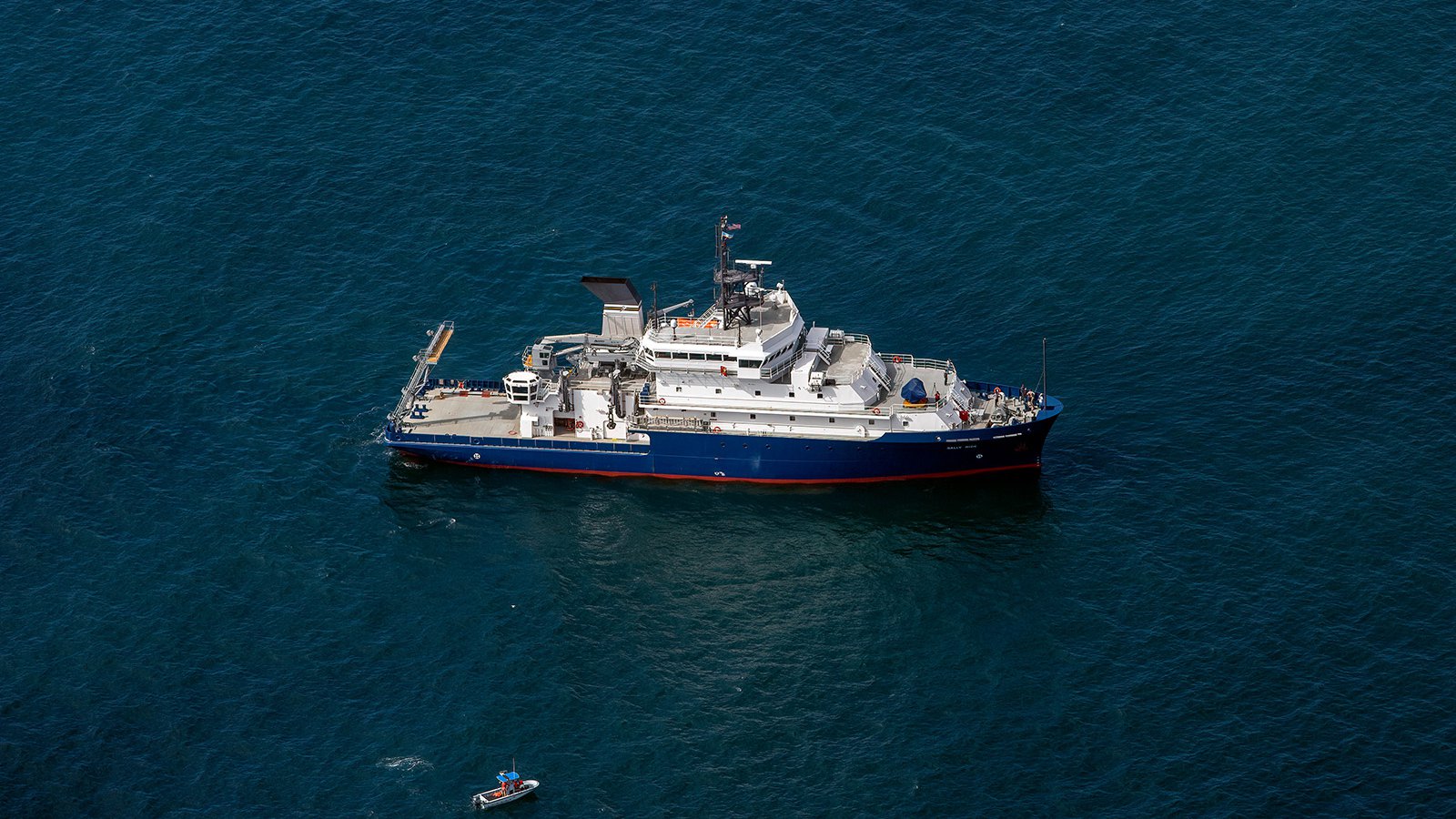
The R/V Sally Ride, is seen in a stunning profile view at the end of her maiden voyage.
The Legacy of Sally Ride
The R/V Sally Ride honors its namesake, Sally Kristen Ride, a pioneer who defied gravity and shattered glass ceilings. Ride was not only the first American woman to propel through the celestial skies as an astronaut but also a brilliant physicist, a passionate educator, and an inspiring figure who broke through Earth's atmosphere and societal limitations. Her maiden flight aboard the Challenger in 1983 symbolized a monumental step for women in STEM fields, mirroring the pioneering spirit that the R/V Sally Ride now carries.
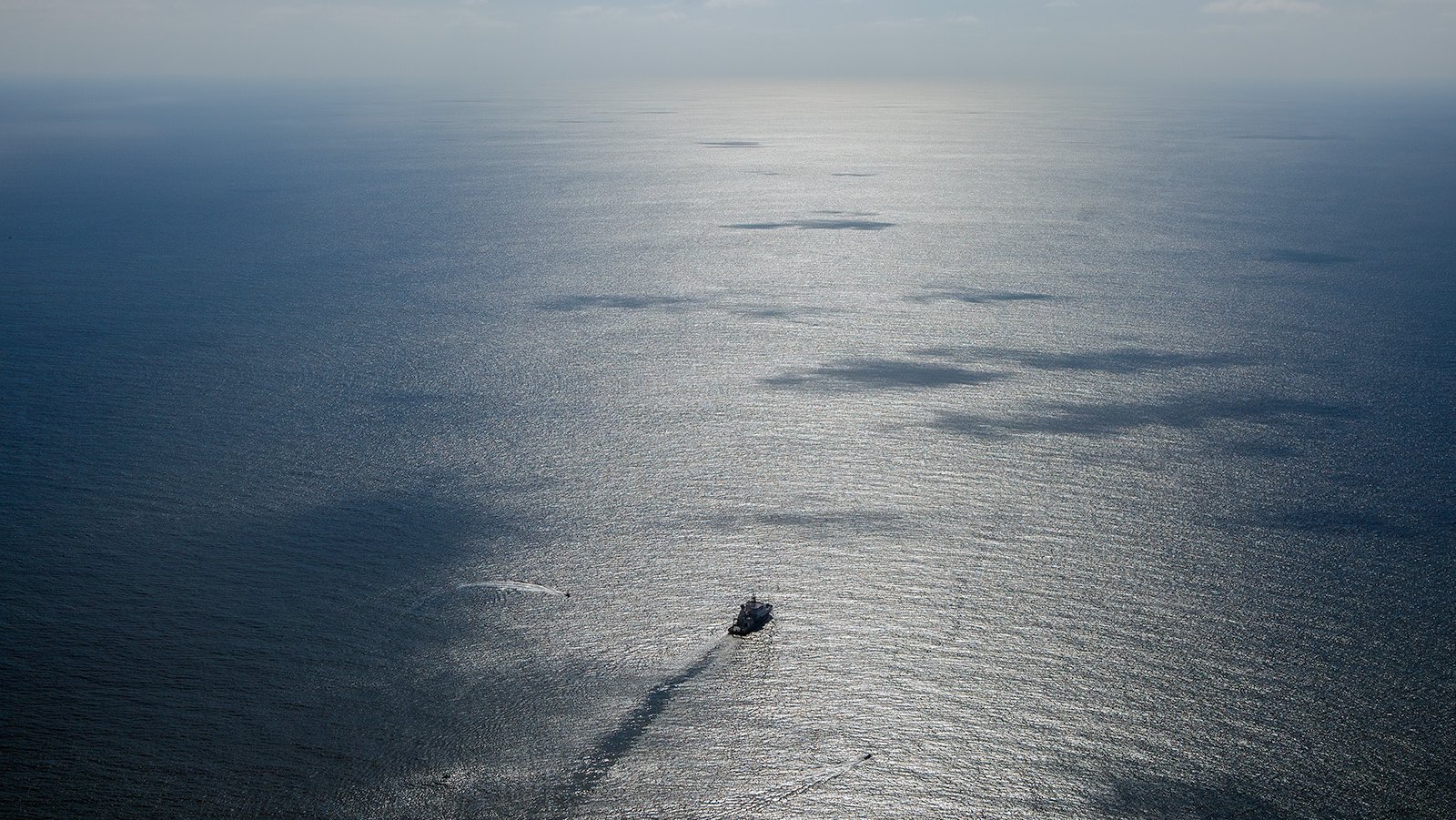
The R/V Sally Ride is seen sailing towards the horizon in the vast Pacific Ocean, equipped with advanced technology and highly trained scientists embarking on a mission of exploration and discovery.
Impact on Science Education
The influence of Sally Ride on science education continues to this day. Through her non-profit organization, Sally Ride Science, she launched various programs and products to engage children in science and foster student interest in STEM careers. These initiatives included arranging science festivals, offering STEM career books to schools, and allowing practicing scientists and engineers to interact with students.
One of the most notable contributions to science education is the NASA EarthKAM project, which Sally Ride helped develop. The project allows middle school students to take pictures of Earth using a camera on the International Space Station, providing a unique perspective of our planet. This innovative approach continues to motivate students to explore careers in science and mathematics.
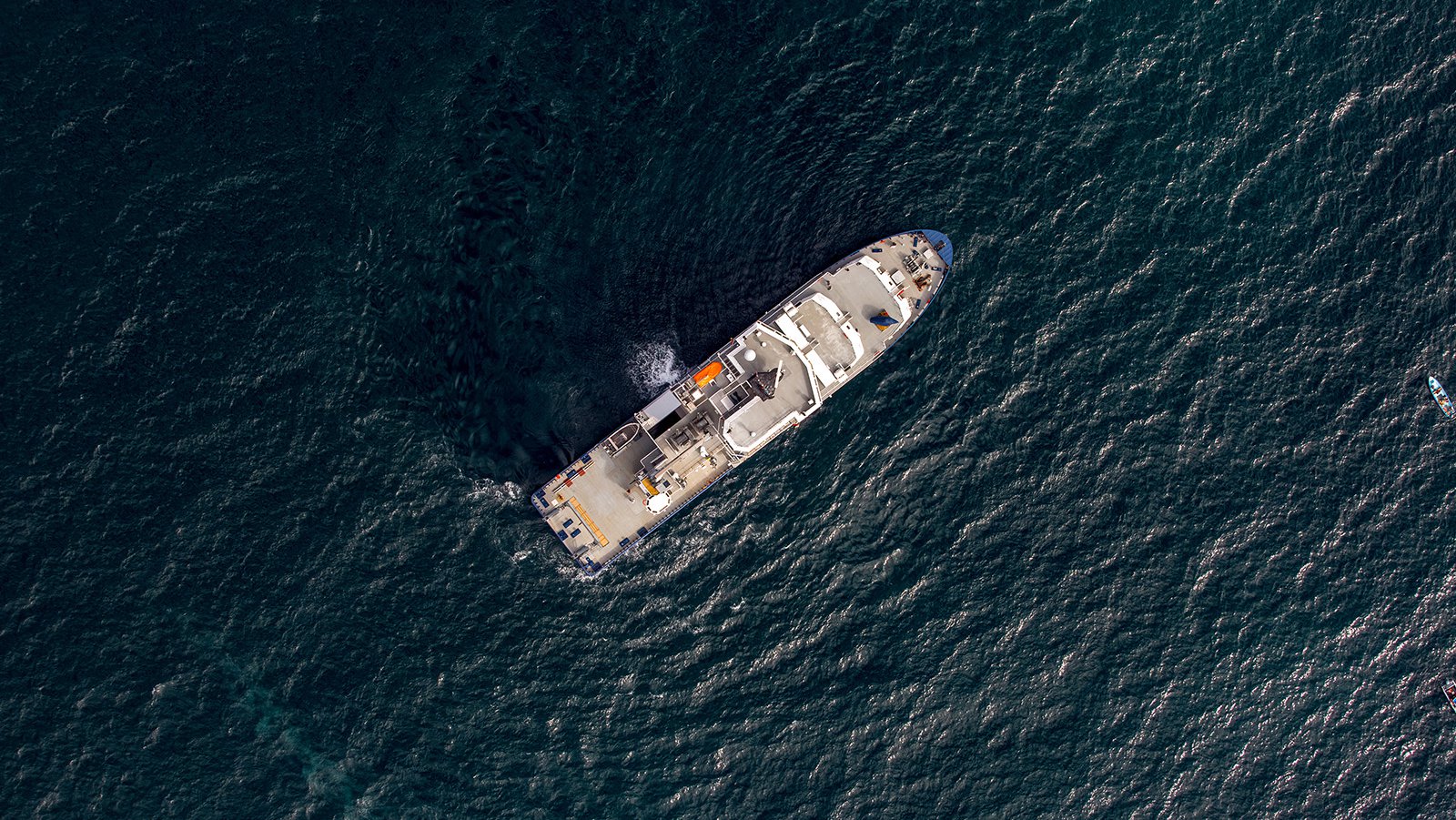
The R/V Sally Ride is shown from a vertical aerial perspective, revealing its impressive size, modern design, and advanced scientific equipment.
The Journey of R/V Sally Ride
The origins of RV Sally Ride trace back to Anacortes, Washington, a charming coastal community known for its scenic beauty and maritime heritage. It was here that Dakota Creek Industries constructed the vessel, incorporating a steel hull design to minimize bubble disruption in the sonar area and the latest technologies for oceanographic research. Following four years of construction, the vessel embarked on its first voyage, traveling down the west coast to its new home in San Diego, California.
As the R/V Sally Ride reached San Diego, it was greeted with enthusiasm and extensive media coverage, as university officials from UC San Diego planned a tribute event. The ship was brought within half a mile of the Scripps Pier in La Jolla, signifying its integration into the Scripps Institution of Oceanography’s research fleet and the beginning of its mission to study the impact of global warming on the oceans.
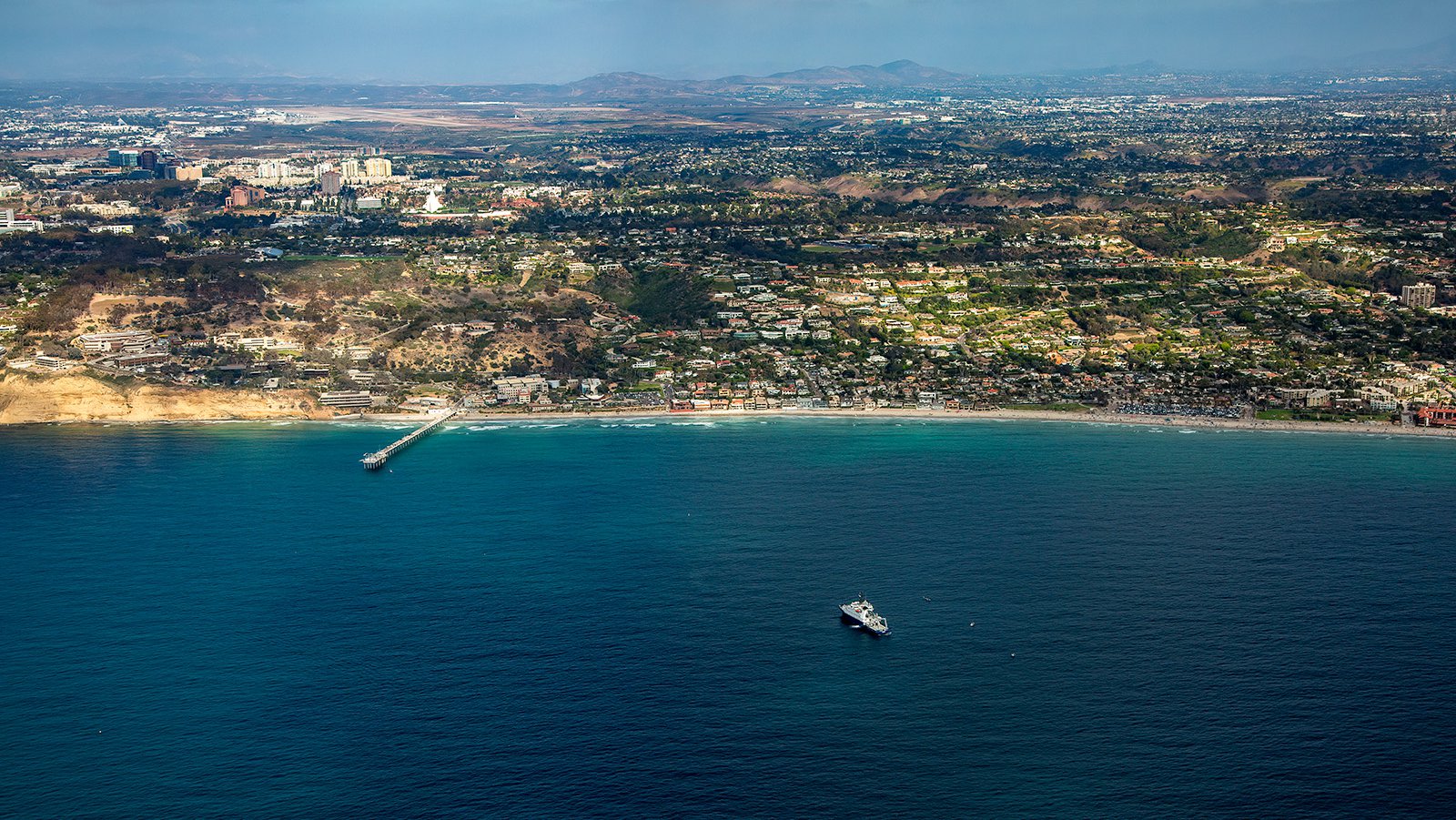
The R/V Sally Ride, a state-of-the-art oceanographic research vessel, in La Jolla Bay at the end of her inaugural voyage, just off the coast of Scripps Pier, with its sleek white and blue hull contrasting against the rich blue waters of the Pacific Ocean
Maiden Voyage
The maiden voyage of the R/V Sally Ride signaled the commencement of its mission to study the impact of global warming on the oceans. Spanning three days, the vessel’s inaugural journey aimed to analyze the influence of global warming on the oceans, gathering invaluable information and insights into the effects of climate change on the oceanic ecosystem.
The voyage’s successful completion signified the commencement of the R/V Sally Ride’s vital research on the high seas. As the vessel continued to explore the depths of the ocean, it would not only contribute to our understanding of global warming’s impact on the oceans, marine biodiversity, ocean acidification, and ocean currents and circulation patterns; but also inspire future generations of scientists, following in the footsteps of its namesake, Sally Ride.

Overshadowed by Downtown San Diego and Naval Air Station North Island, the R/V Sally Ride passes the tip of Point Loma—small in size, grand in purpose.
Arrival in San Diego
Upon arrival in San Diego, the R/V Sally Ride was welcomed with open arms by both the scientific community and the media. The vessel’s arrival marked a significant milestone in the partnership between the Scripps Institution of Oceanography and the Office of Naval Research, as the RV Sally Ride joined the research fleet. Located at the Scripps Nimitz Marine Facility in Point Loma in the San Diego Bay, the vessel found its new home port and support center.
The initial scientific mission of the RV Sally Ride was scheduled for November 4th, following its arrival in San Diego. As a sister ship in the Scripps Institution of Oceanography’s research fleet, the R/V Sally Ride would embark on numerous scientific expeditions, gathering vital data on the effects of global warming on the oceans and contributing to the advancement of oceanographic research.
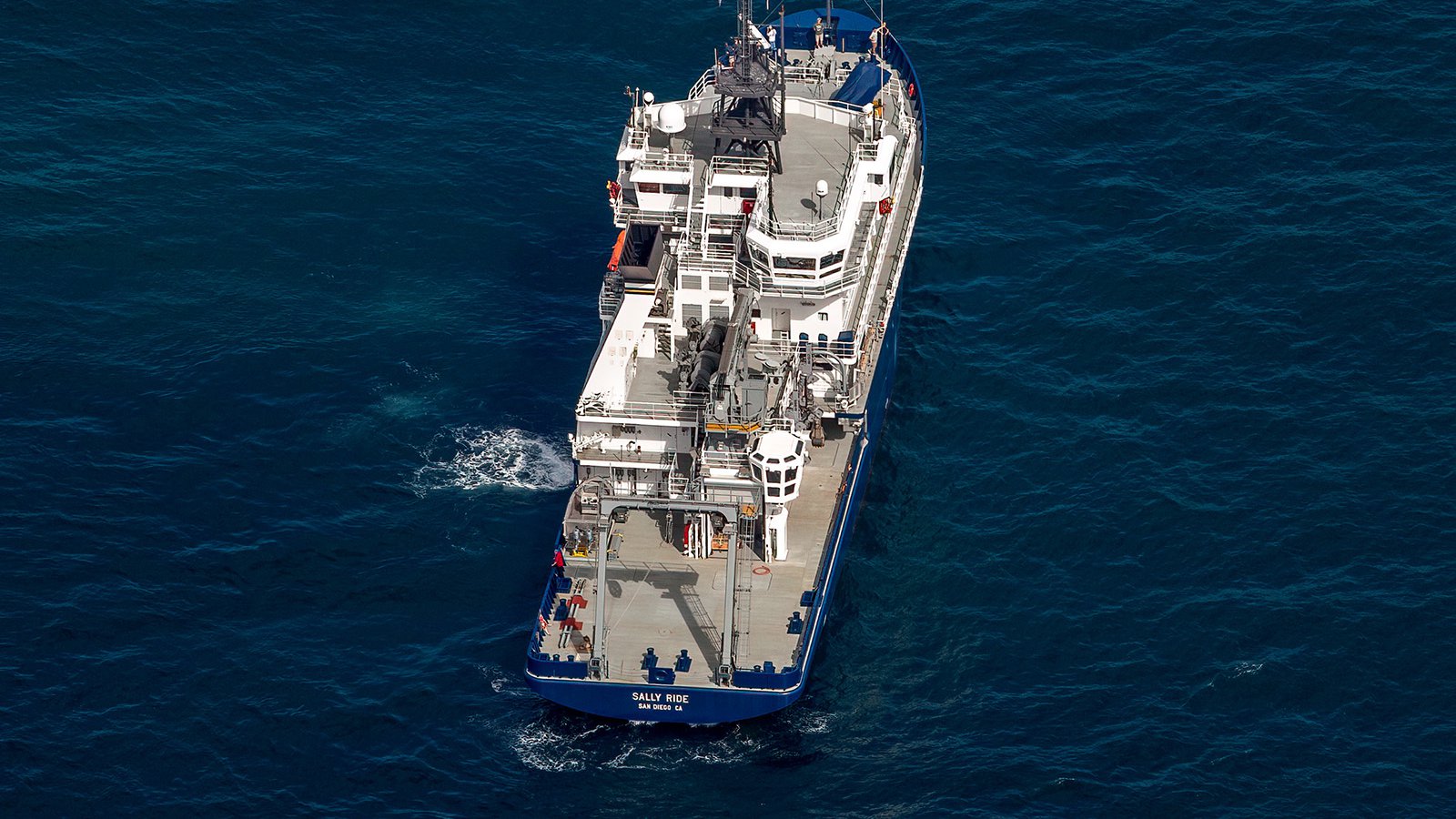
Aerial photograph capturing the stern of the R/V Sally Ride, resplendent with bold, white lettering bearing the name of the legendary astronaut, taken at the end of the ship's successful maiden voyage.
Research Vessel Capabilities
With its state-of-the-art oceanographic research tools, accommodations for 24 scientists and a crew of 20, and a commitment to sustainability initiatives, the R/V Sally Ride is a shining example of modern research vessel capabilities. As an Ocean Class Auxiliary General Oceanographic Research (AGOR) vessel, it is designed to facilitate multidisciplinary oceanographic research operations on a global scale, further assisted by its range of 11,500 nautical miles and ability to be out to see for a period of over 40 days.
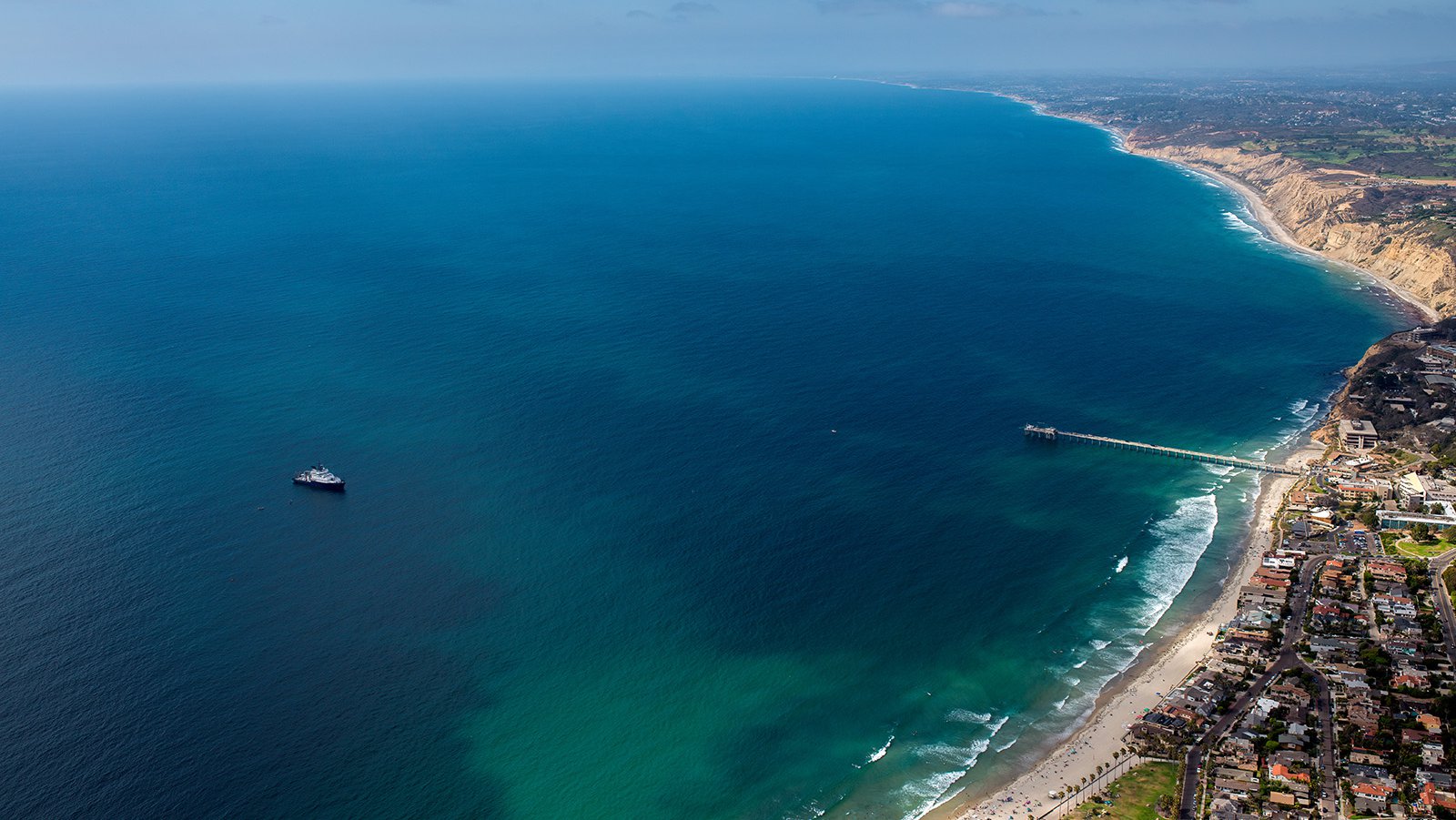
The R/V Sally Ride, a state-of-the-art oceanographic research vessel named after the first American woman astronaut, is captured in an aerial photo as it cruises through the pristine waters of the La Jolla Bay and a stunning panoramic view of the California Coastline
Oceanographic Research Tools
With its oceanographic research tools, the R/V Sally Ride enables scientists to study various aspects of ocean health and climate change. These tools include advanced sensing and measuring properties of the water, such as temperature, velocity, and oxygen concentration. Furthermore, they are utilized for sampling and data collection of surface, mid-water, and sea floor environments.
Equipped with cutting-edge technology, including acoustic equipment for mapping the depths of the ocean and modular systems for observation, measurement, and data collection, the R/V Sally Ride offers unparalleled research capabilities in the field of oceanography. These tools are instrumental in gathering data on various aspects of the ocean, including temperature, salinity, currents, carbon cycle, and ocean acidification, all of which are crucial for understanding the effects of climate change on the ocean, assessing the health of marine ecosystems, and formulating strategies for conservation and mitigation efforts.
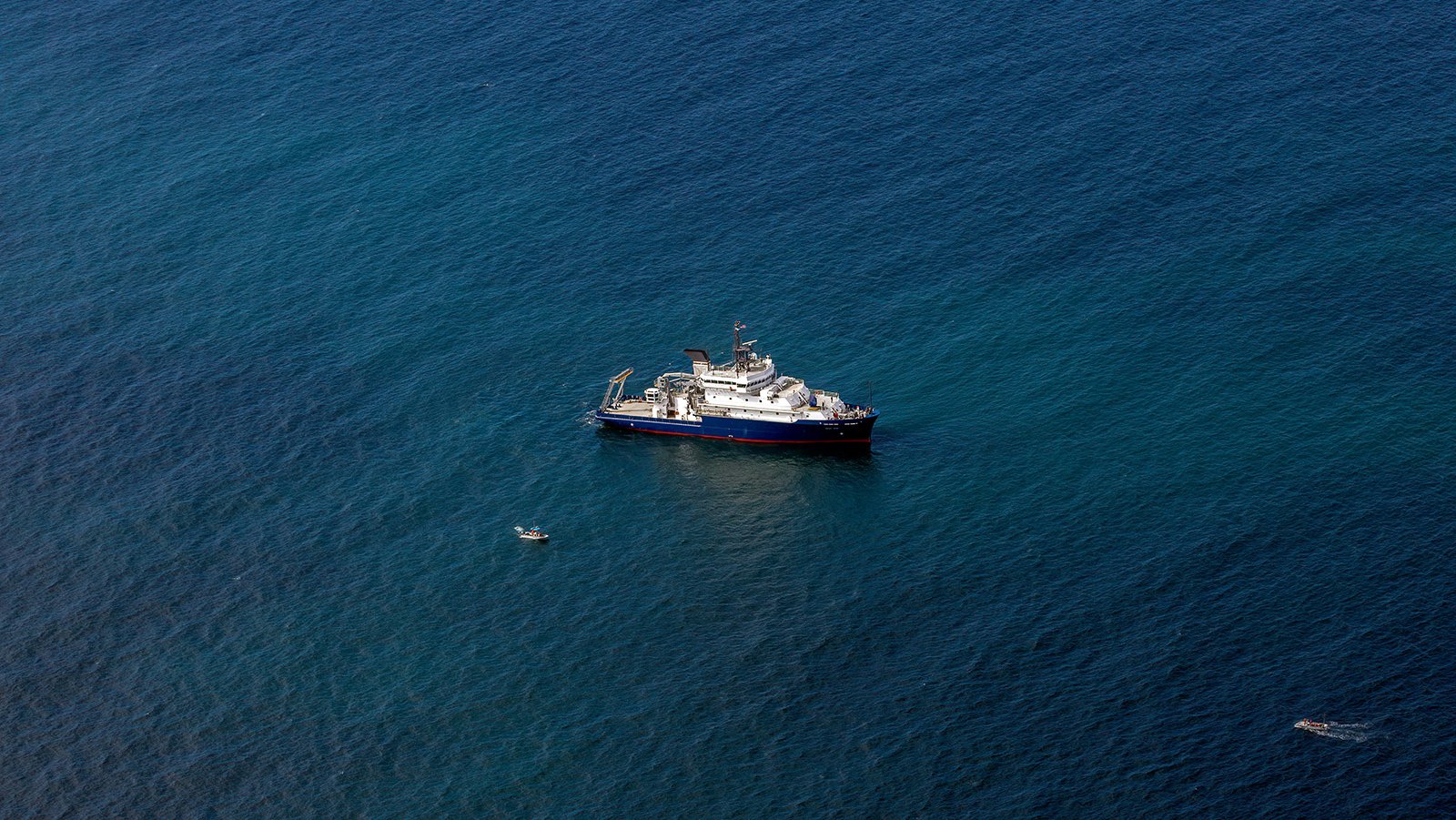
The R/V Sally Ride gracefully navigates through La Jolla Bay, its sleek hull cutting a clear path in the calm Pacific Ocean waters.
A Voyage of Discovery
The R/V Sally Ride has unparalleled capabilities in seafloor mapping with advanced multibeam echo sounders. These sophisticated instruments audit the ocean’s floor, illustrating the unseen in stunning clarity and breadth. Scientists aboard conduct a myriad research activities, including the notable CalCOFI Cruise and integrative studies aligned with the Long Term Ecological Research Network (LTER).
The RV Sally Ride's future planned voyages will focus on the following areas:
- State-of-the-Art Seafloor Mapping: Pioneering mapping technologies revealing unprecedented details of marine geology.
- CalCOFI Cruise: Critical deployments like CTD casts and resourceful netting methods collect invaluable marine data.
- Marine Mammal Observations: Consistent marine mammal tracking underscore the voyage's ecological surveillance efforts.
- LTER: The California Current Ecosystem site add essential information to global ecological data sets.
- Coring Operations: Unlocking millions of years of geological and climatic history, sediment cores collected will inform future knowledge about our changing Earth.
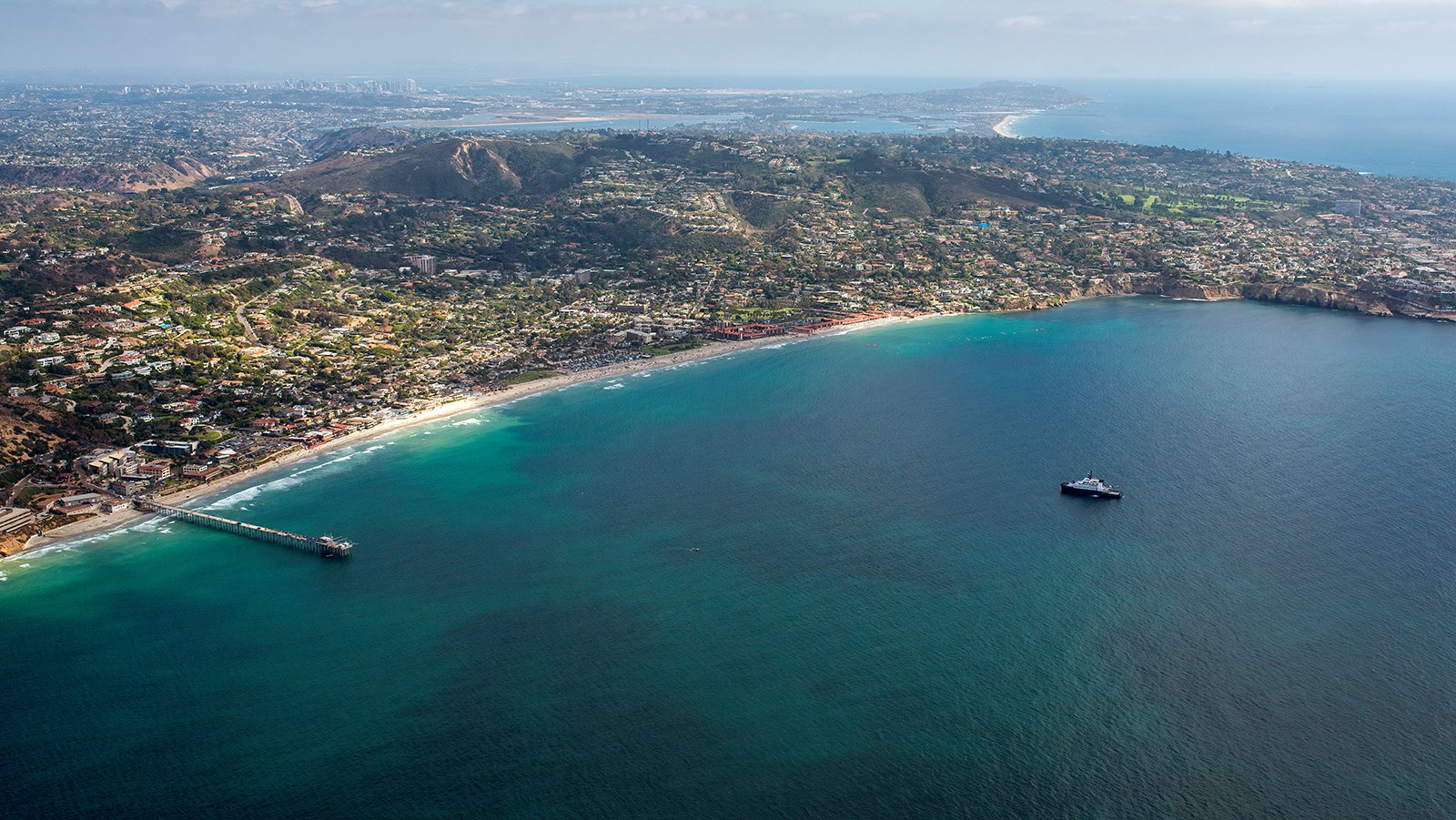
The R/V Sally Ride in the La Jolla Bay with the iconic Scripps Pier in the foreground and the stunning skyline of downtown San Diego and Coronado Island in the background
Sustainability Initiatives
Sustainability initiatives are a key commitment of the R/V Sally Ride, incorporating renewable energy sources and environmentally friendly practices into its operations. The vessel utilizes renewable diesel fuel, produced from vegetable oils and animal fats, which is processed differently than regular diesel and has virtually no sulfur content. This environmentally friendly alternative to traditional diesel fuel reduces greenhouse gas emissions and promotes cleaner air quality.
Additionally, the R/V Sally Ride is equipped with solar panels, providing a renewable energy source that reduces the vessel’s dependence on fossil fuels and contributes to the reduction of its environmental impact. These sustainability initiatives demonstrate the R/V Sally Ride’s dedication to minimizing its ecological footprint while conducting vital research on the high seas.
The Scripps Institution of Oceanography Connection
The Scripps Institution of Oceanography operates the R/V Sally Ride, an prestigious institution with a history of over 40 years of partnership with the Office of Naval Research. This partnership has been instrumental in advancing oceanographic research and gathering scientific knowledge, with the National Science Foundation (NSF) providing additional support for scientific equipment and instrumentation.
As the R/V Sally Ride sets out on its research missions under the management of the Scripps Institution of Oceanography, it joins a fleet of research vessels that have made groundbreaking discoveries and advanced our understanding of the oceans. The vessel’s connection to Scripps and the Office of Naval Research serves as a reminder of the importance of collaboration and the pursuit of knowledge in the field of oceanographic research.
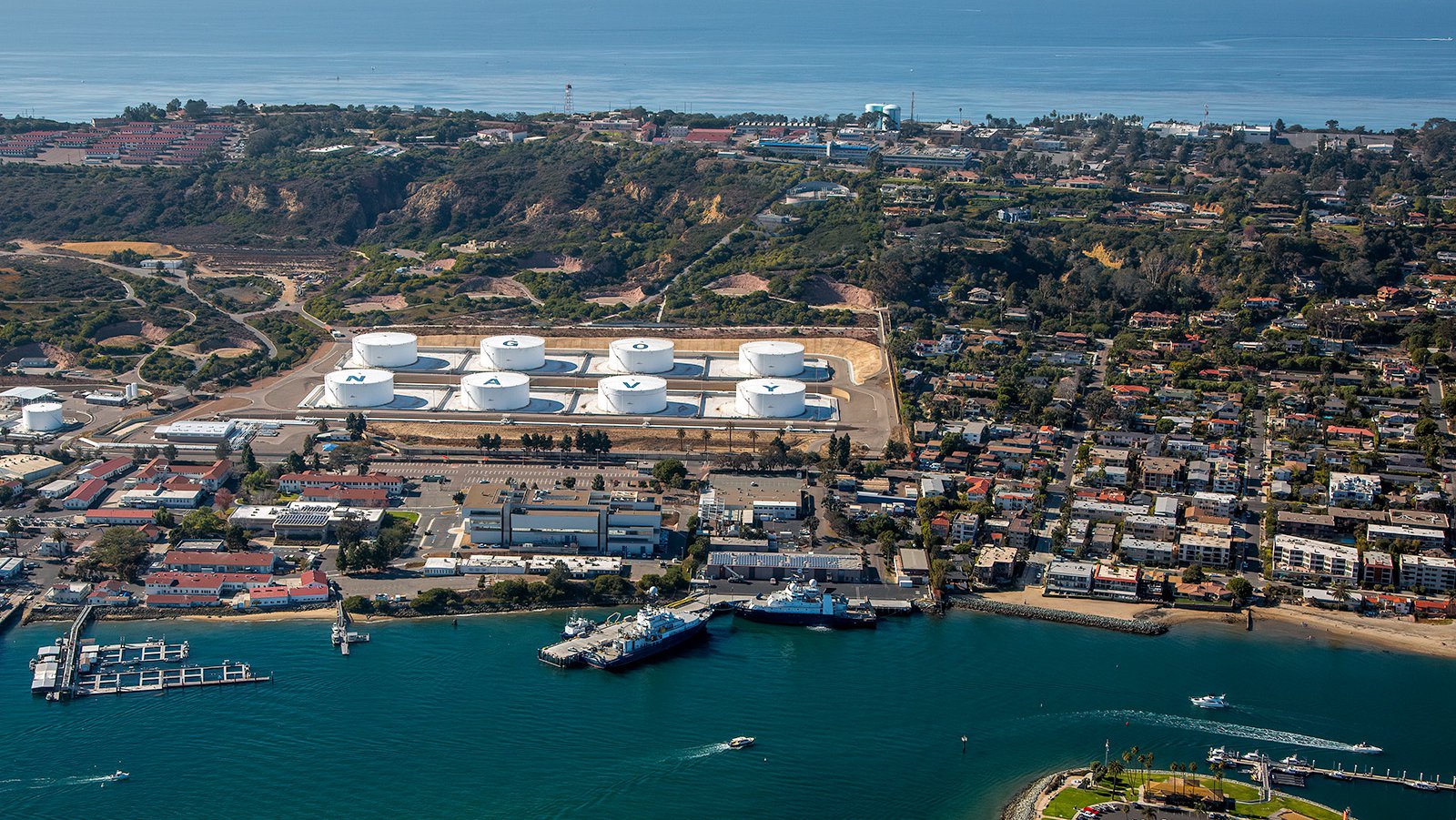
Docked at the Nimitz Marine Facility, the R/V Sally Ride is under the watchful gaze of the "GO NAVY" water towers.
Partnership with the Office of Naval Research
The partnership between the Scripps Institution of Oceanography and the Office of Naval Research allows the R/V Sally Ride to conduct multidisciplinary oceanographic research worldwide. The Office of Naval Research is a major contributor to oceanographic research, providing financial and technical support for scientific studies and technological advancements in the field. They collaborate with academic institutions, government agencies, and industry partners to investigate various aspects of the ocean, such as marine biology, oceanography, and underwater technology.
With the Office of Naval Research’s backing, the R/V Sally Ride has the resources and support necessary to embark on groundbreaking research missions and gather invaluable data on the oceans. This partnership enables the vessel to contribute to the advancement of oceanographic research, expanding our understanding of the complex interactions between the oceans and climate change.
Global Warming Research on the High Seas
The R/V Sally Ride primarily focuses its research on studying the impact of global warming on the oceans. This vital research aims to shed light on the complex interactions between the oceans and climate change, providing invaluable data and insights that can help guide conservation and mitigation efforts. As the vessel embarks on scientific expeditions around the world, it collaborates with other institutions to gain a more comprehensive understanding of global warming’s impact on the oceans.
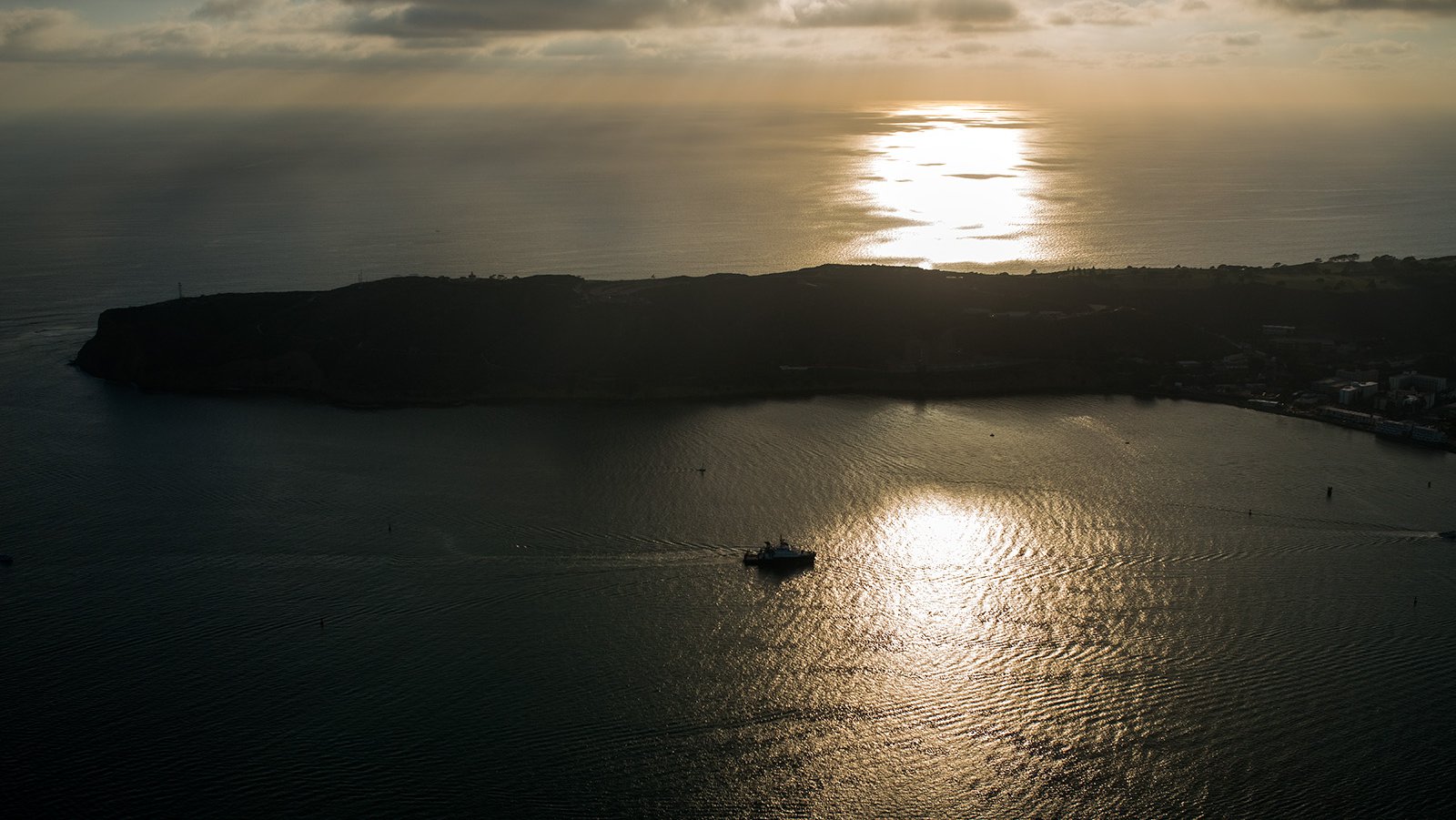
A silhouetted R/V Sally Ride heralds the close of her maiden voyage near Point Loma as the sun dips into the Pacific, leaving a reflective dance upon the water.
Climate Change and Ocean Health
It is imperative to understand the relationship between climate change and ocean health for developing strategies to mitigate the effects of global warming. Global warming has several implications on the ocean’s ecosystem, including the warming of ocean waters, leading to thermal expansion and a rise in sea levels. Carbon dioxide absorption from the atmosphere results in ocean acidification, altering the pH of the ocean. These changes have a domino effect on marine life, such as coral reefs, fisheries, and other marine ecosystems. Furthermore, the melting of glaciers and land ice due to global warming further contributes to rising sea levels and erosion.
The RV Sally Ride’s research on climate change and ocean health aims to:
- Untangle complex interactions
- Provide a clearer understanding of the consequences of global warming on the marine environment
- Formulate effective conservation and mitigation strategies
- Ensure the preservation of our oceans and the countless species that depend on them.
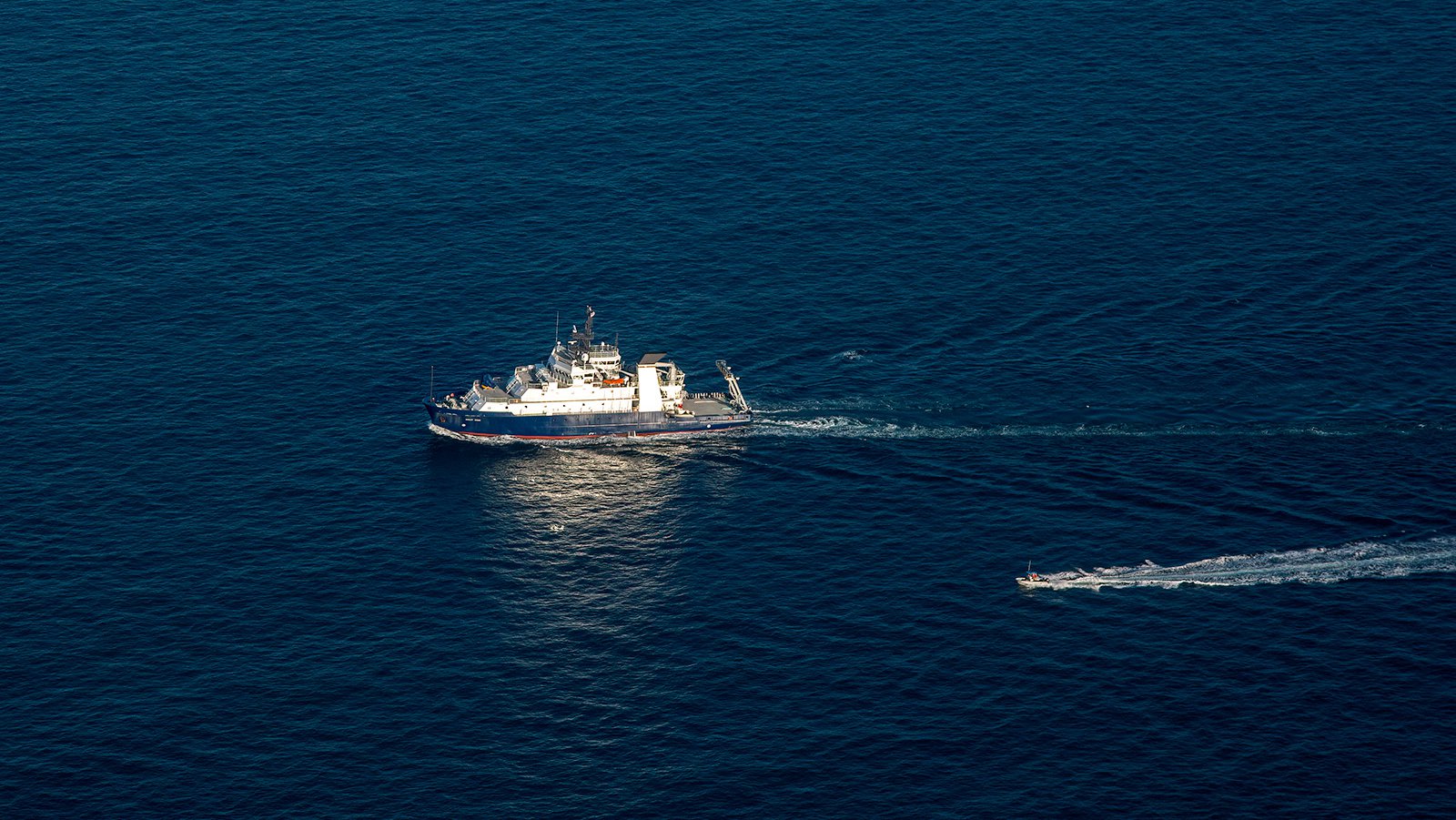
Profile of the R/V Sally Ride as she returns to Point Loma, San Diego, triumphantly concluding her maiden voyage.
Data Collection and Analysis
The R/V Sally Ride is involved in the collection and analysis of data to better understand the complex interactions between the oceans and climate change. The vessel employs a variety of methods to collect data on ocean health, including sensors, moorings, underwater recordings, doppler sensors, and autonomous underwater vehicles (AUVs). Through these research tools, the RV Sally Ride can gather data on various aspects of the ocean, taking into account factors such as temperature, salinity, currents, carbon cycle, and ocean acidification, all in real-time.
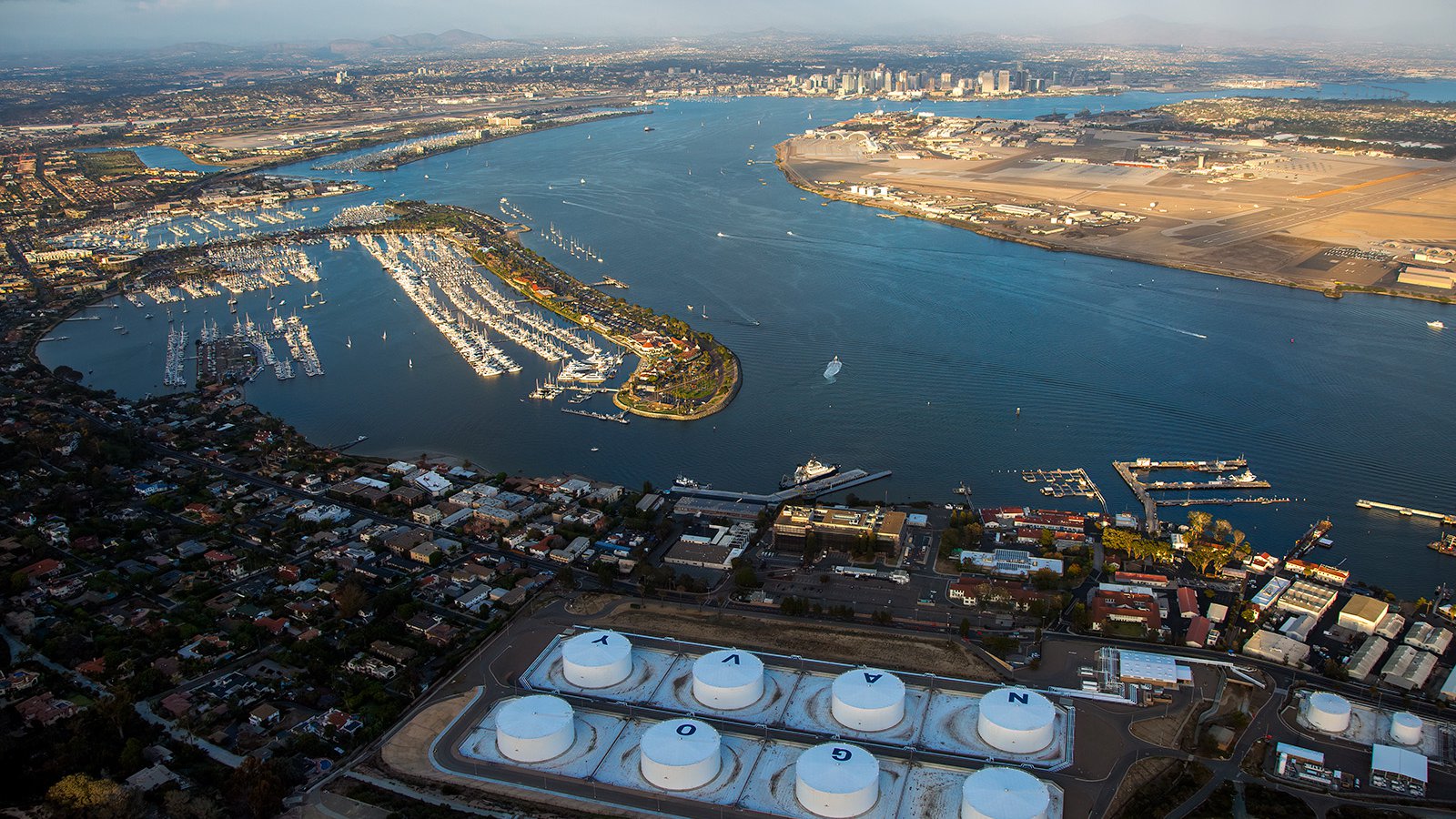
RV Sally Ride at Point Loma's Nimitz Marine Facility, surrounded by Kona Kai Marina, Downtown San Diego, and NAS North Island.
The RV Sally Ride’s mission to study the impact of global warming on the oceans is not only a testament to its namesake’s passion for scientific research and education but also serves as a beacon of hope for the future of our planet. As the vessel navigates the high seas, collecting data and collaborating with other institutions, it contributes to our understanding of the complex interactions between the oceans and climate change, ultimately guiding conservation and mitigation efforts. In the spirit of Sally Ride, the R/V Sally Ride continues to inspire future generations of scientists, as we endeavor to preserve our oceans and the countless species that depend on them.